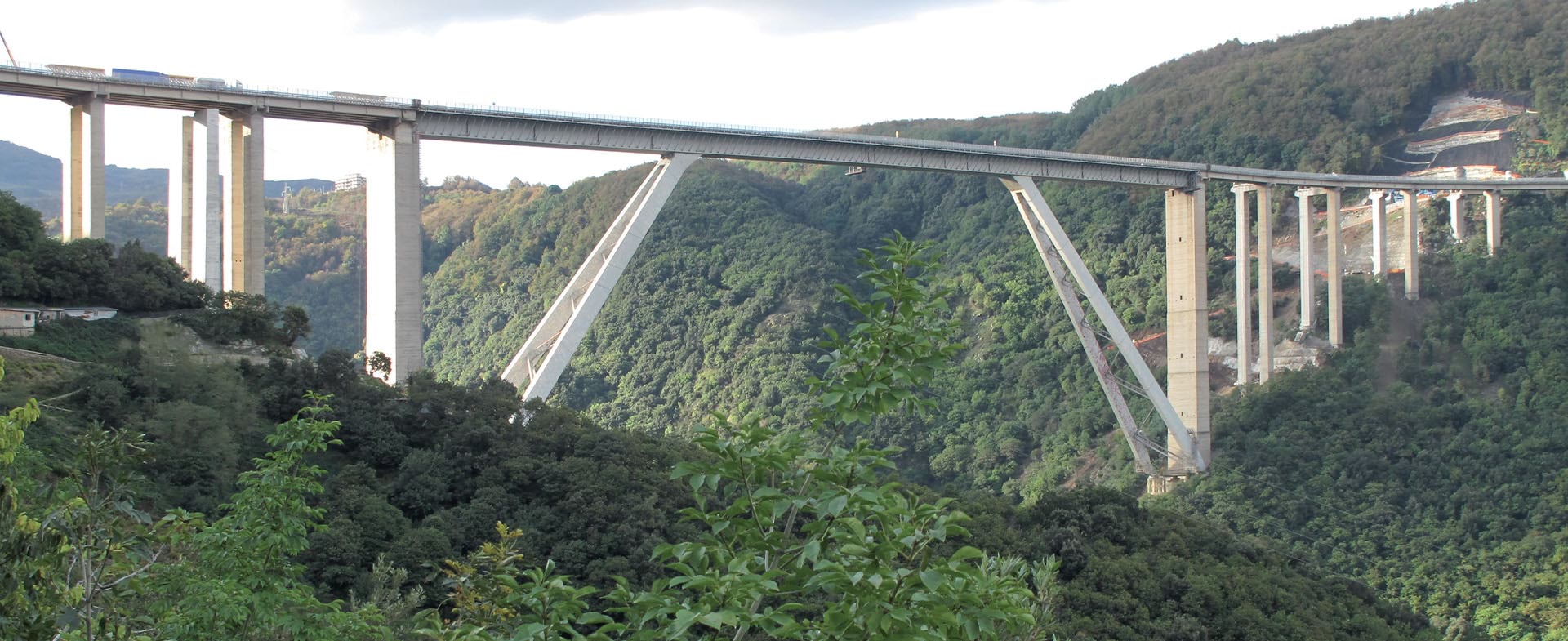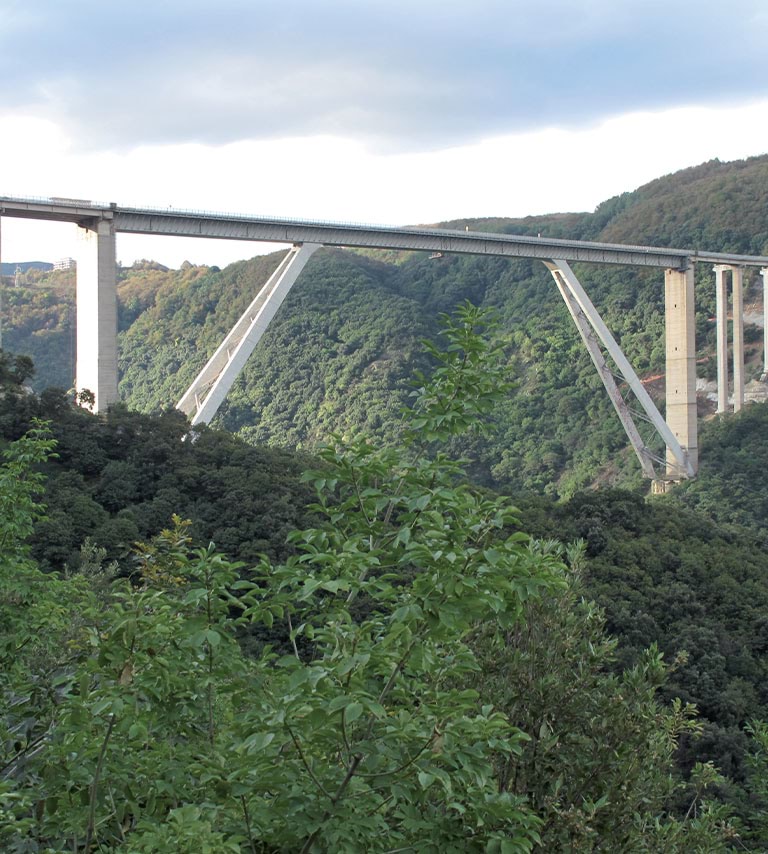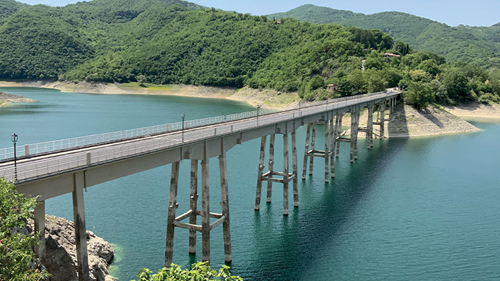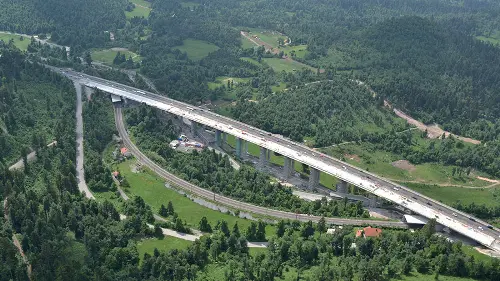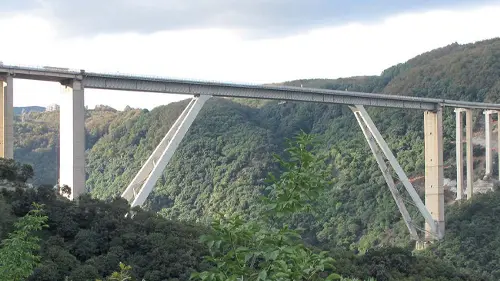Author
Simone Barile
Technical Services - Building Products Line, Mapei SpA (Italy)
The durability of concrete structures and infrastructures is often undermined by cracking phenomena arising from the onset of dynamic cyclic loads. This leads to the creation of preferential access routes for aggressive agents. This is why Mapei formulated MAPEGROUT EASY FLOW ZERO mortar with CO2 emissions offset for its entire life cycle. The product was subjected to fatigue tests at Federico II University of Naples.
The role of innovative materials and standards
Over the years, the concept of durability in structures has taken on an increasingly important and central role when talking about repairing concrete. For instance, according to the Italian regulations called “Technical Construction Standards” dating 2018, the term durability refers to “The capacity of a construction, over the course of its nominal design life, to maintain the level of performance for which it was designed, taking into consideration the characteristics of the environment in which it is located and the expected level of maintenance”. The term durability also goes perfectly hand in hand with the concept of environmental sustainability, an issue that has become of primary importance in all sectors and, above all, in the construction sector.
The durability of concrete structures and infrastructures is often undermined by cracking phenomena arising from the onset of dynamic cyclic loads. This leads to the creation of preferential access routes for aggressive agents that put the integrity of the structures themselves at risk.
This is why Mapei formulated MAPEGROUT EASY FLOW ZERO sulphate-resistant, thixotropic mortar with high resistance to cracking and with CO2 emissions offset for its entire life cycle*. The following text is a report of results obtained from tests carried out on this product
Restoring infrastructures using a mortar with high resistance to fatigue
The test campaign carried out at the Federico II University of Naples aimed to determine the behaviour of concrete elements subjected to cyclical dynamic flexural loads and repaired with MAPEGROUT EASY FLOW ZERO.
Three different series of samples were used for these tests: the first and second series, consisting of concrete elements with a compressive strength of 30 MPa and 60 MPa, respectively, and a third series of concrete elements with a compressive strength of 30 MPa and repaired with MAPEGROUT EASY FLOW ZERO.
The fatigue behaviour of the elements was analysed by creating their relative S-N diagrams, with each diagram representing analytical curves on a logarithmic scale for each series of samples, where S represents the amplitude of the loads and N is the number of load cycles. To this scope, four point bending tests were carried out. The samples were initially loaded statically to failure point to determine the ultimate flexural strength of the material ơu, and then dynamically by applying loads in steps (50,250 cycles each) with increasing amplitude. The Palmgren-Miner rule was then applied to determine the S-N curves and to estimate the fatigue strength of each element.
As shown in Figure 2, the concrete samples with Rck 30 Mpa and repaired with MAPEGROUT EASY FLOW ZERO have better fatigue behaviour with respect to that shown by the sample in concrete as is with a compressive strength of 30 MPa. What is more, this behaviour is comparable to that of concrete with a characteristic compressive strength of 60 MPa.

Figure 1: Repaired concrete samples subjected to dynamic loads. Figure 2: Diagram of the S-N curves of the 3 series of concrete samples. S represents the amplitude of the loads and N is the number of load cycles.
Tests on full-scale restored and non-restored beams
Apart from this experimental campaign on scale-sized samples, dynamic cyclic flexural tests were also performed on full-scale repaired and non-repaired concrete beams.
These tests were designed using a bespoke experimental procedure based on:
- accelerated corrosion;
- structural repairs with MAPEGROUT EASY FLOW ZERO;
- application of dynamic loads.
The fatigue behaviour of the tested beams and the type of cracking resulting from the tests were correlated with the level of corrosion reached and the effectiveness of the repair work carried out using MAPEGROUT EASY FLOW ZERO. Four reinforced concrete beams were made for these tests. The first beam was denominated B1_R, where "R" stands for "reference" because it was the only beam that was tested without applying repair mortars following accelerated corrosion (3%).
The other beams, B2_8%, B3_6% and B4_3%, were repaired on the intrados with MAPEGROUT EASY FLOW ZERO and had different levels of corrosion; the percentage indicates the level of corrosion, which varied from 3% to 8%, expressed as a (theoretical) loss in mass of steel. All the beams were designed according to the prescriptions of the Italian Technical Construction Standard (NTC2018) for structural analysis. Once the accelerated corrosion process had been completed, the concrete cover of beams B2_8%, B3_6% and B4_3% was removed by chiselling before applying the repair mortar. The concrete cover was then repaired by applying a 5 cm thick layer of MAPEGROUT EASY FLOW ZERO.
All the beams were subjected to dynamic flexural tests in four points, as shown in Figure 3. The flexural load was applied using a large-scale steel testing frame equipped with a servo-hydraulic actuator with a 200 kN load capacity.

Figure 3. . Test set up
The graph in Figure 4 correlates the force and displacement recorded during the tests and was obtained by superimposing the fatigue curve envelope for the four beams with three different levels of corrosion.
Important considerations were made by analysing how cracking propagated during the tests.
- For beams with a similar level of corrosion, from low to moderate, the restoration of the damaged concrete cover with MAPEGROUT EASY FLOW ZERO tends to increase the first cracking load of the beam in comparision with the non-repaired counterpart; the application of mortar is able to stabilise crack openings and prevents them appearing longitudinally, as shown in the lower surface of beam B1_R;
- In the cases of higher levels of corrosion, the restoration of the concrete cover with MAPEGROUT EASY FLOW ZERO is able to induce a positive multi-cracking configuration under dynamic cyclic loads. The higher the number of cracks, the smaller their openings.
Figure 5 shows the progression of cracks with the maximum opening according to the load applied. Comparing reference beam B1_R and repaired beam B4, both having the same level of corrosion, crack opening occurs at much higher loads for the repaired beam. Also, analysing the behaviour of beam B2 with 6% corrosion, twice that of the reference beam, the progression of crack opening is similar, even though it has a considerably higher level of corrosion.
Structures and infrastructures with damaged concrete, therefore, may be restored with a highly durable and sustainable approach, thanks to the application of a structural repair mortar with excellent resistance to dynamic loads and CO2 offset for its entire life cycle.

Figure 4: Fatigue curve envelope of the 4 beams. Figure 5: Crack opening versus load comparison.
*The Zero Line encloses products with CO
2 emissions measured throughout the life cycle of products in 2024 using Life Cycle Assessment (LCA) methodology, verified and certified with EPDs, and offset through the acquisition of certified carbon credits in support of forestry protection projects. A commitment to the planet, to people and to biodiversity. For more details on how emissions are calculated and on climate mitigation projects financed through certified carbon credits, visit the webpage
zero.mapei.com.
